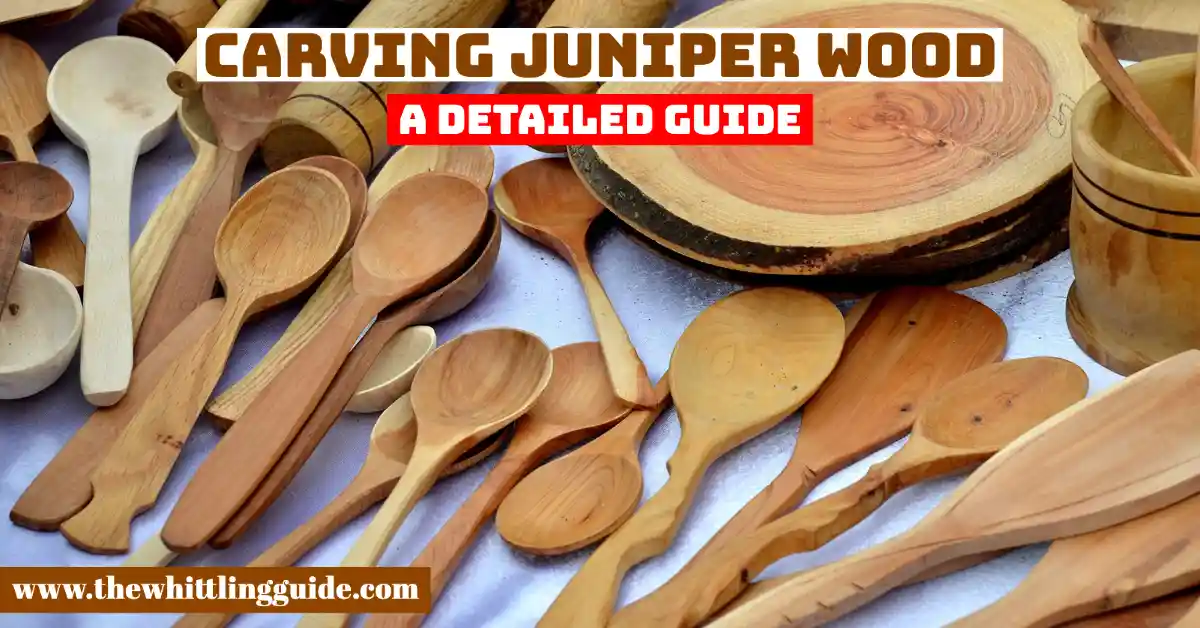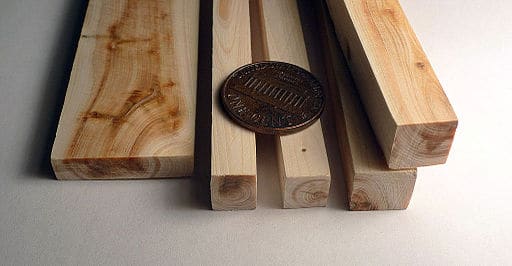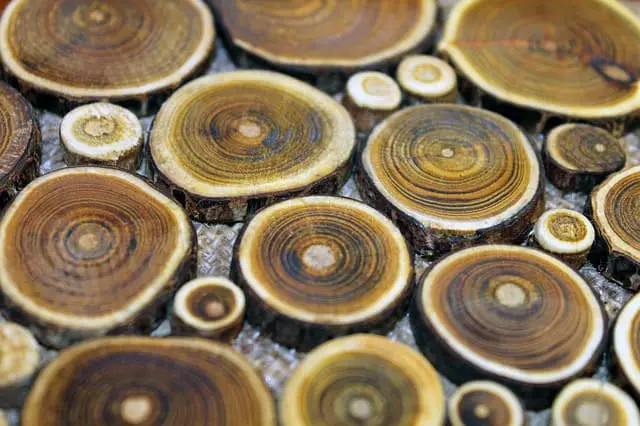
Carving juniper wood is a beautiful hobby that anyone can learn with a little time and perseverance. Take the time to learn the essential tools and techniques by following the steps. You can carve small objects like bowls, plaques, etc. These are the things I have learned over the years, and I hope they are helpful to you.

What is juniper wood?
Juniper Wood comes in almost 70 species, and it belongs to the cypress family. It is popular in the Northern hemisphere as an ornamental tree and a rot-resistant wood type.
It comes with the performance of pressure-treated wood without chemicals and is cost-comparative with redwood and cedar. Above all, it lasts longer than both and performs better in retaining walls, garden boxes, fencing, decking, or siding.

Juniper wood is a better species due to its durability in the timber industry. It makes cabinets, fence posts, and pencils. The slabs work better for tables and chairs, and the higher-end wood makes furniture, cabinets, and butcher blocks.
Using a chainsaw to carve juniper wood
Be fully prepared for the carving project since the chainsaw is a dangerous tool. You need protective clothing, including a jacket, gloves, and a helmet that gives you maximum protection. Follow the safety precautions to minimize risk.
Decide on the pattern you wish to carve. Pick the perfect chainsaw since they come in different sizes and weights. Use sandbags to hold the wood securely as you carve. Practice on smaller pieces of juniper wood first.

Try carving a log that is 15 inches in diameter or less so that you get used to the process. Once you have mastered the smaller logs, you may upgrade. After the cuts on the wood, you have the option of finishing the carving with a knife.
It works for smaller details that elevate your carving. Use sandpaper to smoothen your carving. After you have worked on the details, finish off your project by treating the juniper wood. The treatment depends on the final location where you will place your ornament. More practice makes you better.
Using a wood chisel to carve juniper wood
You can use either or both hands when using a wood chisel to carve juniper wood. However, maneuvering a chisel requires the right hand to power it. Grasp the tool handle or tap it with a mallet. Use your left hand to register the blade against the work and to provide fine control. Use a wooden or plastic mallet with a large striking face on the chisels.
Selecting the wood
Depending on your species, junipers can have an upright spreading ranging from 6 inches to 130. Pay attention to your needs to get minor suitable juniper wood for your project.
Start with a piece of juniper wood that is at least 1/4inch thick.
You do not have to start on the juniper wood you wish to carve. Starting on a small piece helps you get used to the material and the woodworks as your sample. Once you mess it up, you must get a new one and start afresh.
It helps you study the material, and better knowledge of handling the wood is what you get. Run the test from cutting, smoothing, treating, and finishing. The moment you get hold of your final wood piece, it becomes easy.
Rub the edges of the wood to make them smooth
Rub the edges with sandpaper to make them smooth. Sandpaper makes smooth, sharp edges. However, it takes more time to sand. The process is much slower, and the chances are low that you will strip large edges away quickly.
Use a sanding block at 45 degrees when you get the initial shape, and sand by hand so that you can round over the edge a little and get a better shape to the finish.
Is juniper wood good for carving?
The appearance of the Juniper wood is worth considering for wood carving. It is a beautiful wood with red, brown, and purple hues, with streaks of yellow running through the grain on some parts. That results in beautiful carvings as ornaments, utensils, and furniture.
The tightness, character of the grain, and its beauty make it an excellent carving wood regardless of the tool used. They range in height from 15 to 35 feet tall, and their trunks have an average of 10-12 inches. However, they do not exceed two feet in diameter, and that is a limitation to the items you wish to carve.
Looking for the right piece for a specific design is a lot of work that requires determination and passion. That makes the juniper wood ideal for enthusiasts, and looking at the wood from its original place is quite motivating.
Carving a stylized natural finish is made easier with the juniper wood. Making sculptures from the hardwood brings out the beauty of the juniper wood. The natural wood flows as it shines through your carving. Juniper wood comes in varieties, and the Rocky Mountain Juniper makes beautiful carvings in its natural state. You can also see Carving Mulberry Wood.
Is juniper a hardwood?
Is juniper a hardwood or softwood? Juniper wood is a bit dense, and the wood is hard for softwood. Juniper is about 70% as stiff as ponderosa pine and 85% as stiff as incense-cedar. That means the wood deforms easily under loads. It makes hardboard, fencing, decking, wall paneling, flooring, veneer, furniture, and novelty items.
Western juniper heartwood is as durable as redwood and cedars. The color of the wood varies from milky white to deep reddish-brown. It comes with large, swirling grain patterns and bands of heartwood mixed with sapwood.
Juniper comes with unique bending properties. When dried, juniper wood shrinks and swells less, and that makes it quality wood. Even soaked in hot water, thin samples tie into intricate knots without splitting.
What wood is bad for carving?
Red Oak is a difficult type of wood to work with. It requires a mallet to carve, and it is quite porous. You cannot carve the wood into objects that come in direct contact with water; it comes with long and big grains.
Despite its difficulty in carving, it gives a smooth finish that requires minimal staining. Red Oak is ideal for professional woodcarvers. It takes experience to deal with, and more knowledge makes the project easy. It remains a durable hardwood in woodwork.
- Grain and Sheen: Teak Oil versus Danish Oil Uncovered - January 10, 2024
- The Cherry on Top: Crafting the Perfect Cutting Board - January 9, 2024
- Polyurethane Water-Based vs Oil-Based: Choosing the Right Finish - January 8, 2024
